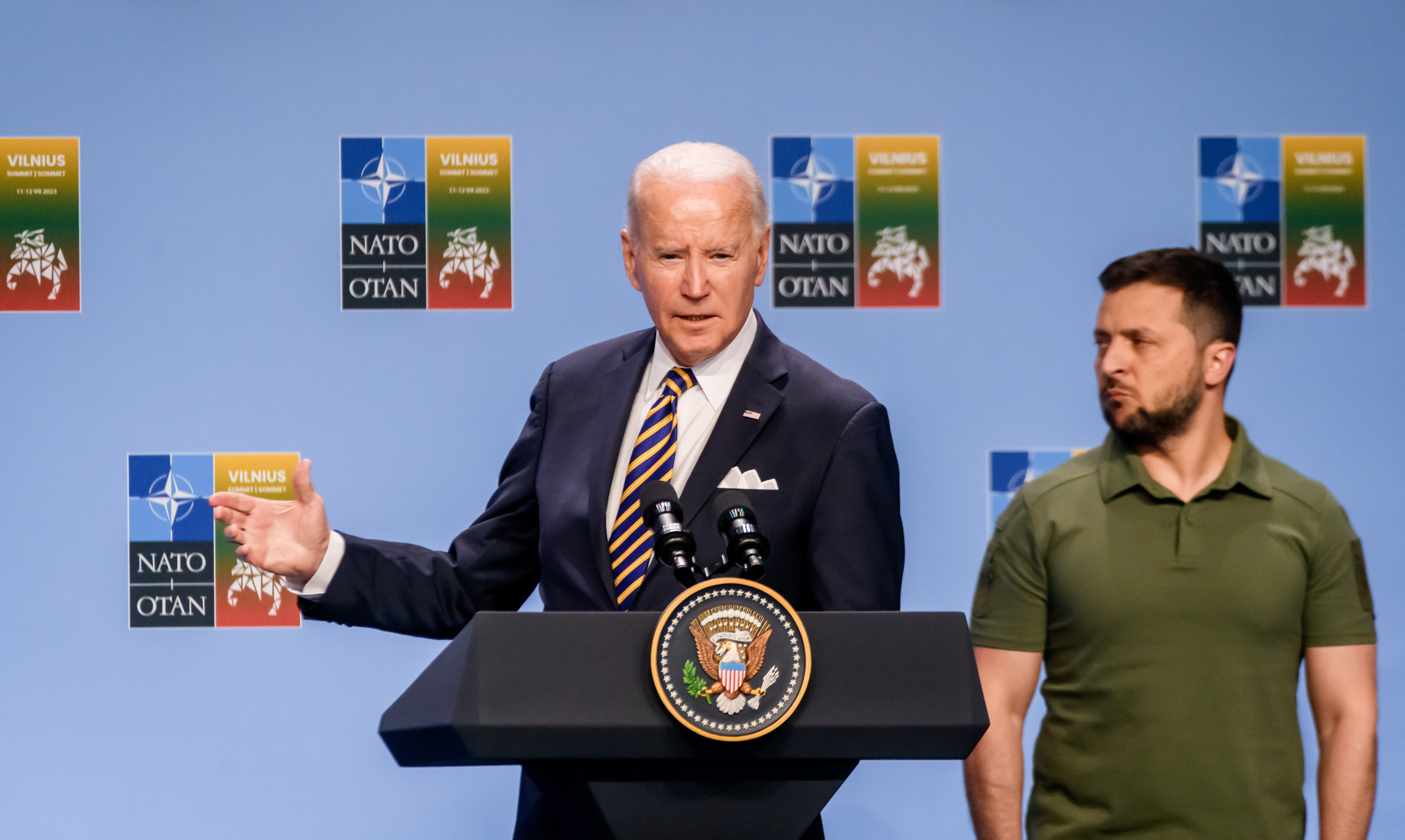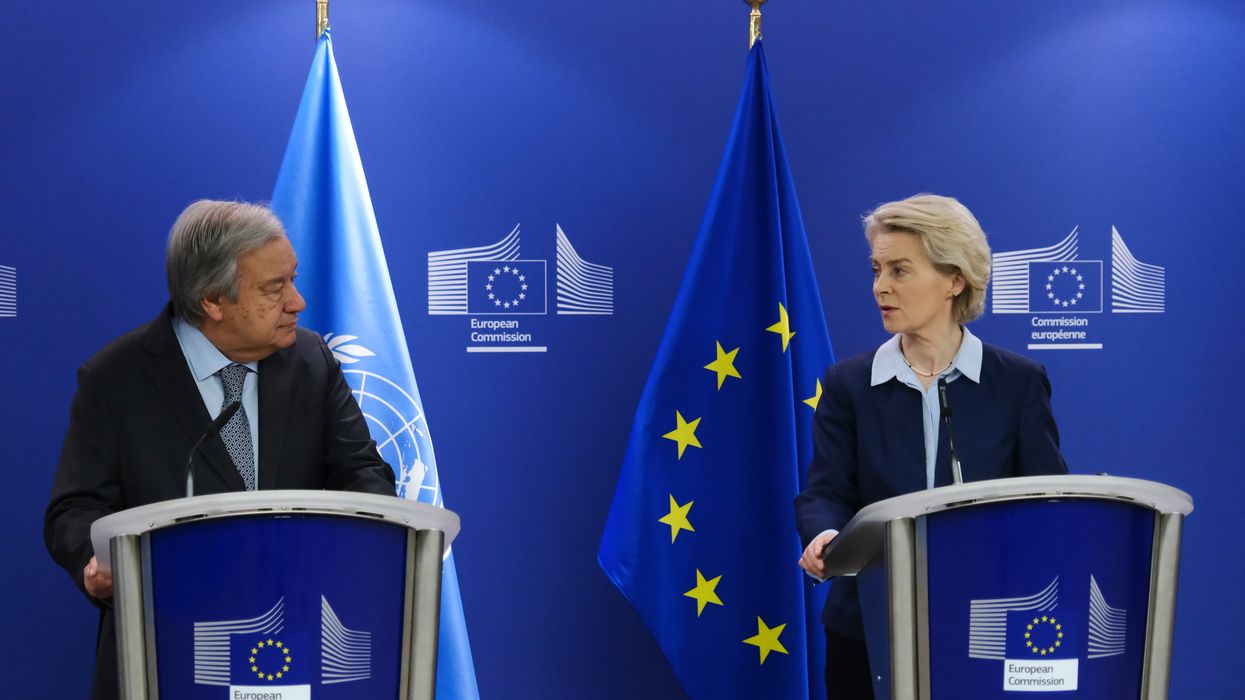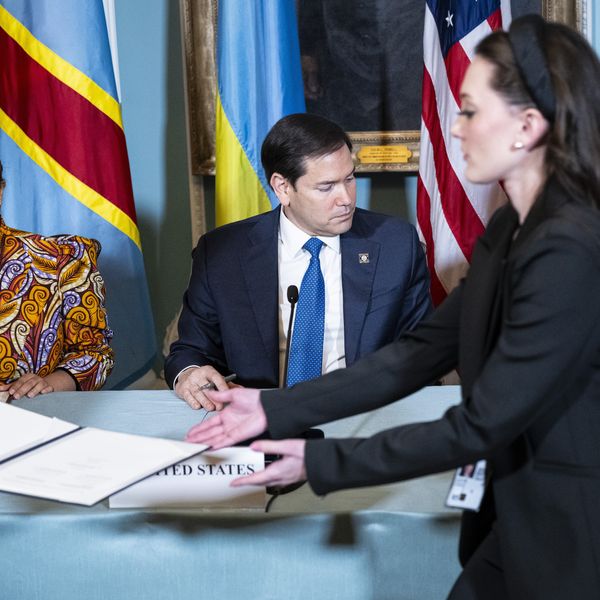The United States is investing in Ukraine’s defense industry for the long haul, even if direct Ukraine aid dwindles in 2024.
President Biden’s most recent drawdown of weapons from U.S. stockpiles is the last he can approve. Other U.S. military assistance to the country now depends on Congress, which has yet to authorize emergency spending that Biden requested in late October.
But U.S. military contractors don’t need congressional approval to co-produce weapons with Ukrainian companies, and the administration is encouraging it to help grow the Ukrainian defense industry. If the U.S. government isn’t careful, however, taxpayers could end up footing the bill to expand weapon production capacity in Ukraine for years to come.
The scale of investment required to establish and expand manufacturing capacity in Ukraine is massive. And contractors are reluctant to make capital investments in general — the data show that their priority is paying their shareholders. So it’s hard to imagine U.S. contractors setting up shop in Ukraine without guaranteed financing from the United States government, even with a partner’s support.
The risk of escalating tensions with Russia is also serious.
Still, co-weapon production may relieve the White House from facing political headwinds on direct Ukraine aid — and on U.S. strategy in Ukraine writ large, though there are signs the administration is considering a more defensive posture. One of the White House’s stated long-term goals is “to advance a robust and self-reliant Ukrainian defense industrial base,” which according to Defense Secretary Lloyd Austin, has been “an important opportunity for partnership with our own defense industrial base.”
In December, the administration hosted the U.S.-Ukraine Defense Industrial Base Conference in DC. The White House reported that about 350 government and industry representatives from the United States, Ukraine, and European allied countries convened “to focus on significantly increasing weapons production” in support of Ukraine’s fight against Russia. There, DOD signed a Statement of Intent on Co-Production and Technical Data Exchange with the Ukrainian Ministries of Defense and Strategic Industries to speed up investment in Ukraine’s defense industry.
The Biden administration also established the interagency Ukraine Deal Team, “consisting of representatives from the Departments of State, Defense, and Commerce.” Penny Pritzler, U.S. special representative for Ukraine’s economic recovery, said that the team will “deploy all available U.S. government tools, including resources and expertise, to help U.S. companies compete and succeed in the Ukrainian defense industry.”
Some U.S. military contractors reportedly already committed to co-producing weapons with Ukraine in the fall preceding a conference in Kyiv, and the administration has been promoting what it calls “co-development, co-production, and co-sustainment” for months. So, while there are certainly operational security concerns with manufacturing in a country at war, there are few details about which U.S. companies will help produce what weapons in Ukraine — especially considering that the U.S. government plans to commit so many resources to the endeavor.
National security adviser Jake Sullivan recently indicated that co-production efforts may start with repair and sustainment activities, but “will eventually involve brick and mortar ‘Ukrainian outfits with Ukrainian expertise relying upon those licenses and tech transfer — and so forth — from U.S. companies and European companies.’” But Ukraine needs a lot of money to create new production lines, and it remains unclear how exactly the United States will support Kyiv in that process. In the past, U.S. industry has expressed its hesitation about working in Ukraine while the war continues.
Reuters recently reported that “two leading American companies” have agreed to co-produce 155 mm artillery shells in Ukraine, starting in 2025 at the earliest. It’s possible companies are waiting for the war to end to get down to business in Ukraine, but when asked by Responsible Statecraft, the Pentagon neither confirmed nor denied whether it’s shaping or planning to shape these reported agreements. One can only assume it will, given its role in the Ukraine Deal Team.
The Pentagon also declined to clarify whether joint production agreements between U.S. and Ukrainian contractors will be subject to any standards for U.S. economic impact, like for example, a certain level of American labor. Military spending is, of course, a terrible jobs producer. But long-term co-production with Ukraine further challenges predominant thinking that military spending (about half of which goes to contractors) is good for U.S. workers and the economy seeing that many of these jobs would go to Ukrainians or other non-American workers.
Contractors committed to joint production with Ukraine nearly four months ago, but the administration is holding its cards close about facilitating co-production agreements despite indications that co-production efforts have already begun. Ukraine’s ambassador to the United States, Oksana Markarova, said at the December conference that with the help of technical data from the Pentagon and U.S. defense industry, production of FrankenSAM (surface to air missile) systems has already begun in Ukraine. The country produces its own missiles, drones, artillery, and ammunition as well, but there are still severe shortfalls, especially on ammunition.
The Pentagon neither confirmed nor denied whether it awarded U.S. companies any Ukraine-related contracts to establish manufacturing capacity in the country prior to the conference in early December. Instead, Pentagon spokesperson Jeff Jurgensen said that “although we have no specific announcements to make at this time, the Department of Defense is actively working with interagency partners and industry to explore approaches for aiding Ukraine in expanding the capacity and capability of its domestic industrial base for the long-term.” The United States is not alone in that pursuit.
European contractors are pursuing joint weapons production with Ukraine, too. With the approval of the German government, Rheinmetall is helping Ukraine repair armored vehicles, and by the end of the year it’ll be producing them in country. According to Euromaidan Press, Rheinmetall invested about 200 million euros to build a new factory in Ukraine, “while Ukraine provided the ground, buildings, and connection to the power grid for free.” British contractor BAE Systems established a local presence in the country as well, with the ultimate goal of producing 105 mm light guns in Ukraine. Radio Free Europe reported the Kremlin responding to BAE’s announcement by saying that “such a venture would in no way contribute to an easing of hostilities between the two countries,” adding that any weapon production facility would garner “special attention” from Russia’s military.
In an ideal co-production agreement, Ukrainian contractors would bear the costs of operating, maintaining, and protecting production facilities. The Pentagon and U.S. defense industry would share technical know-how, and Ukraine would handle the heavy lifting. But U.S. defense contractors have little if any financial incentive to help their Ukrainian partners operate and thrive independently.
Either way, companies need to protect their investments. Weapon production facilities are already Russian targets. New and expanded production facilities in Ukraine will inevitably attract Russia’s attention, and the cost to protect them will be great. If Ukraine ultimately can’t cover the costs of operating, maintaining, and protecting plants that U.S. contractors help build, contractors are sure to step in on the U.S. government’s dime.
The administration and Ukraine Deal Team must ensure that co-production agreements explicitly outline how U.S. contractors will transfer to Ukrainian companies financial ownership of operations, maintenance, and protection processes. The administration’s goal may be to help Ukraine develop a self-reliant defense industrial base, but that certainly wouldn’t be in the financial interests of U.S. military contractors.
- Aid for Israel and Ukraine is not an American jobs program ›
- Pass Ukraine aid, but make it conditional on ending the war | Responsible Statecraft ›
- Would House approve ‘loaning’ rather than giving Ukraine aid? | Responsible Statecraft ›
- US contractors in Ukraine: Another 'red line' crossing? | Responsible Statecraft ›
- Biden 'surges' aid to Ukraine, this senator wants guardrails on it | Responsible Statecraft ›
- A bucket list for Biden | Responsible Statecraft ›














